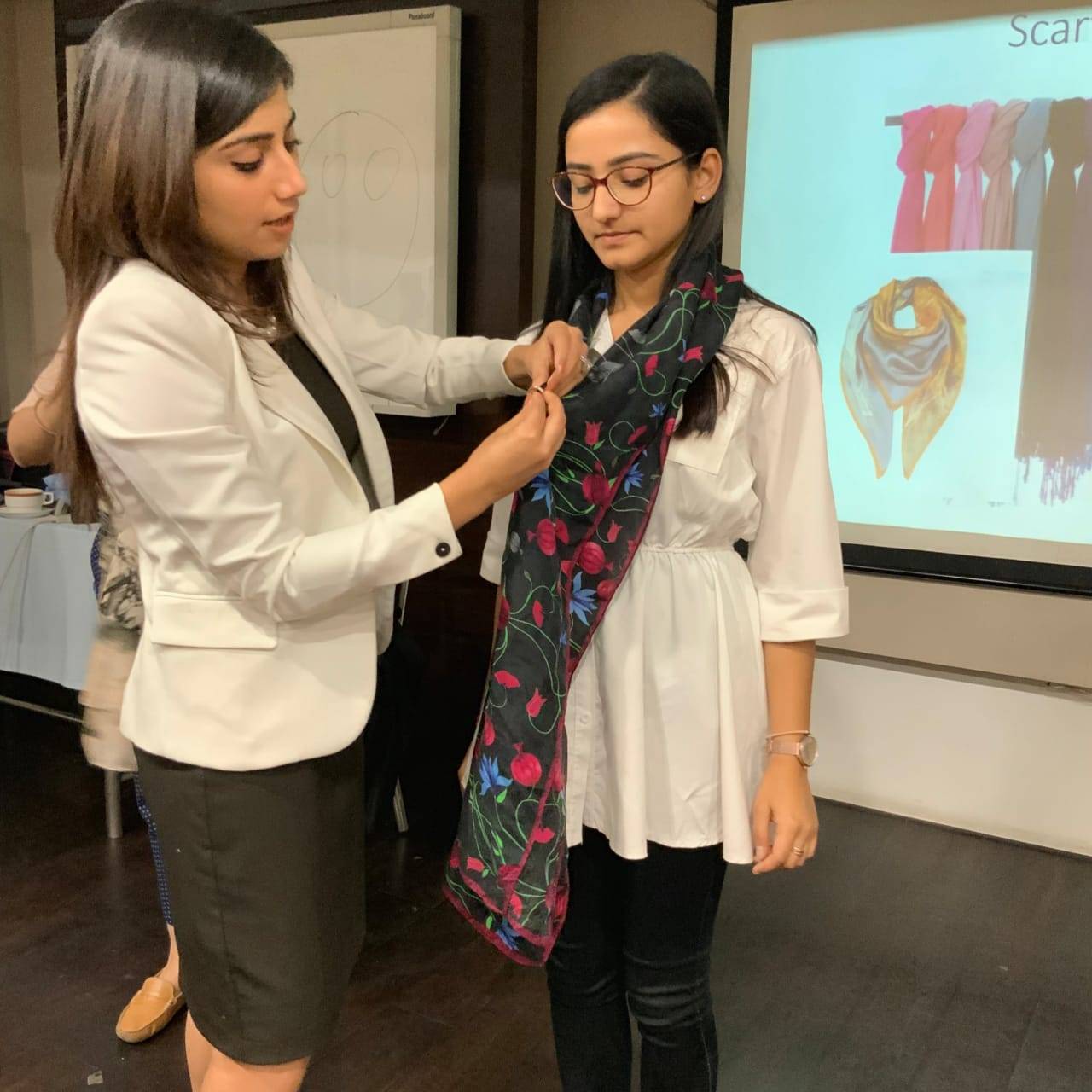Three secrets to building a powerful personal presence

Imagine yourself entering a room filled with people. As you enter, people step aside. Heads turn. Conversations open to include you. When you speak, people applaud and acknowledge. When you ask, people answer. When you lead, people follow. When you leave, your absence is felt. Isn’t this feeling exhilarating? The feeling of being heard and valued. Over the years, people have reached out asking for help to attain this kind of influence in their personal and professional lives. This influence stems from having a powerful personal image and presence. Building a powerful personal presence is a unique recipe formed by these three secret ingredients.
Power Dressing
It takes less than three seconds to form a first impression about you. In these three seconds, your clothes/appearance communicate even before any actual conversation takes place. So, they better be saying the right things. Power dressing is about dressing authentically and appropriately — as per your personality and as per the occasion. The emphasis is on dressing with an intent. So, when you stand in front of your closet tomorrow morning, ask yourself
What roles will I be assuming today?
What activities will I be indulging in?
What do I want to communicate about myself?
For instance, if you have to lead an important meeting at work or appear for a job interview, your goal in such situations is to communicate that you are capable, formal, reliable and persuasive. You should pick a dark-coloured business suit that represents formality and authority. After the meeting, you promised your child that you’ll take him shopping. Your roles now have changed from being a professional to a parent. A tailored-suit wouldn’t be appropriate any more as it is too formal. A casual shirt or tee paired with jeans would make you more approachable. Even former US President Barack Obama used to remove his suit jacket and roll up his shirt sleeves while interacting with kids so that he could connect with them.
Body Language
Late American actor Mae West said, “It’s not what you say, it’s how you say it.” Echoing those sentiments, Albert Mehrabian, a psychology professor at the University of California, Los Angeles, stated that 55% of meaning pertaining to feelings and attitudes is communicated through body language, 38% through tone of voice and a mere seven percent of meaning is communicated through spoken words. Surprising, isn’t it?
Here are some pointers that can help you communicate better:
Mind your posture
An open and straight posture instantly adds on to your charisma and confidence. In any professional or social circumstance, stand tall with a straight posture and uncrossed arms. Crossed arms can signal defensiveness, anxiety, or nervousness.
Let your hands talk
Make sure that your hands are visible whenever you are interacting with someone or addressing an audience. Your hands are your trust indicators. Whenever someone can see your hands, they tend to trust you more. Hence, refrain from keeping your hands in your pockets.
Smile
Smiling is the most underused tool by leaders. A smile adds positivity and approachability to your presence and makes the audience feel welcomed.
Make eye contact
Making constant eye contact communicates interest, ingenuity, and assurance. To improve your eye contact, try noticing the colour of the eye colour of the people you meet.
Assertive Communication
“I prioritise my best interests; I value myself and my feelings. At the same time, I’m compassionate towards your feelings and interests too.” This is the essence of assertive communication. It’s based on a ‘win-win’ principle where there’s transparency and mutual respect between both parties involved. Not all people are born assertive, but the good news is that it is a learnable skill.
The first step to becoming an assertive communicator is to:
Be self-aware
Know your strengths, weaknesses, dreams and targets. Self-clarity enables you to define your boundaries with people and prioritise yourself. It helps you say NO to people whenever you are in a forced situation.
Listen to understand and not to respond
Listening is one of the most powerful communication techniques that you can have in your arsenal. It can make or break professional and personal relationships. Especially during a conflict, if you feel that the discussion is not going as planned — pause and listen empathetically; reciprocate the other person’s point of view. For instance, you could say something like, “I think I hear what you are saying, let’s see if I understood it correctly. You’re suggesting that we…” — and then sincerely try to repeat what they said.
Use “I statements” – Analyse these statements:
“I don’t agree” or “You are wrong”
“I feel ignored” or “You don’t care”
“I am treated unfairly” or “You are so unfair”
Which ones do you prefer? Mostly, people relate to the former ones as personal accountability holds more weightage than passing the blame on others.



If all of this still feels like an overwhelming task, don’t think twice before reaching out to me for assistance: reachmnic@gmail.com or Instagram: @meenal.narula.
Meenal Narula is an internationally-certified Image Consultant, Soft Skills Trainer and a Personal Presence Expert. She has trained over 5,000 professionals around the globe and has enabled them to establish a powerful presence
Article by: Meenal Narula






